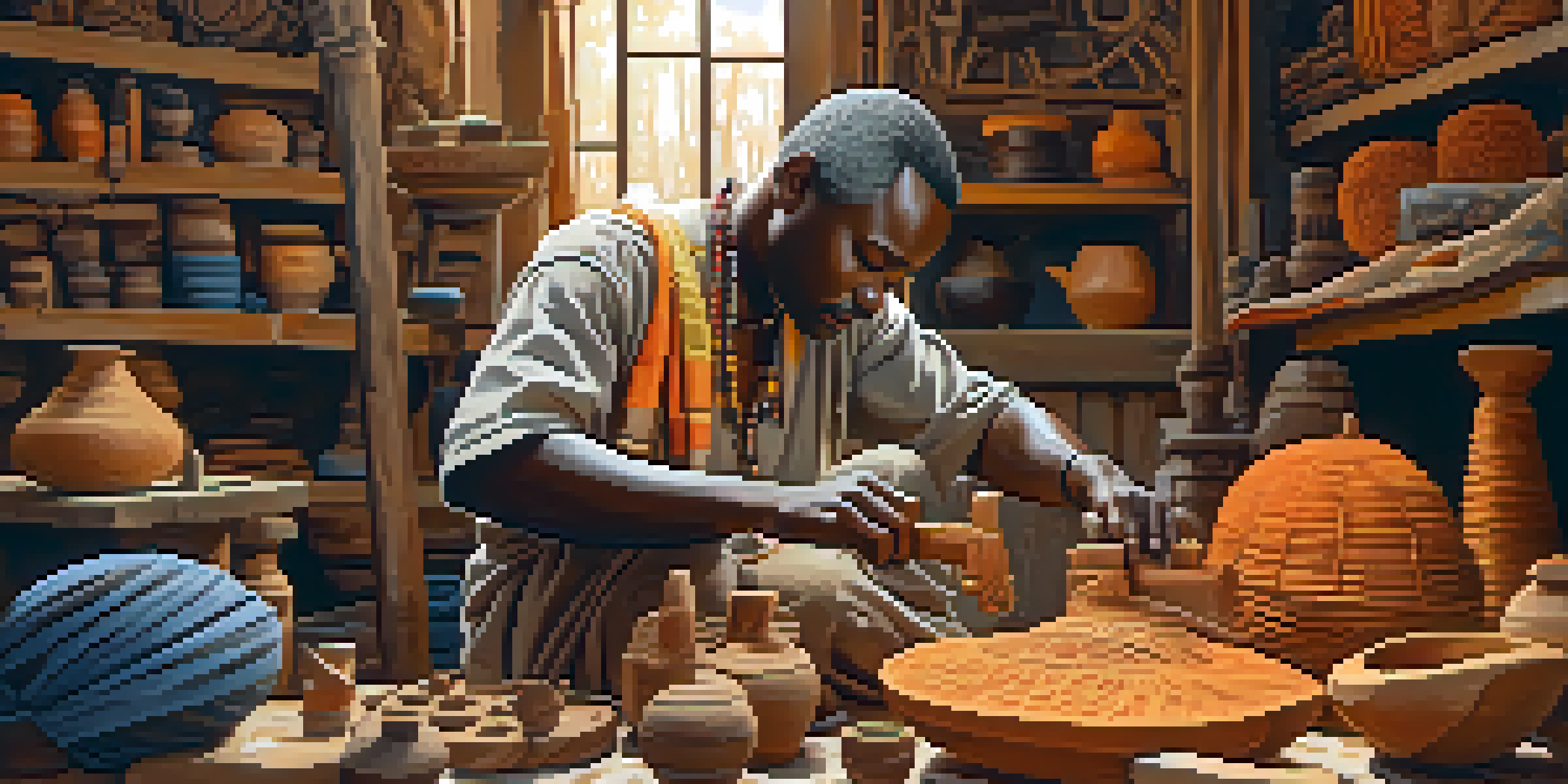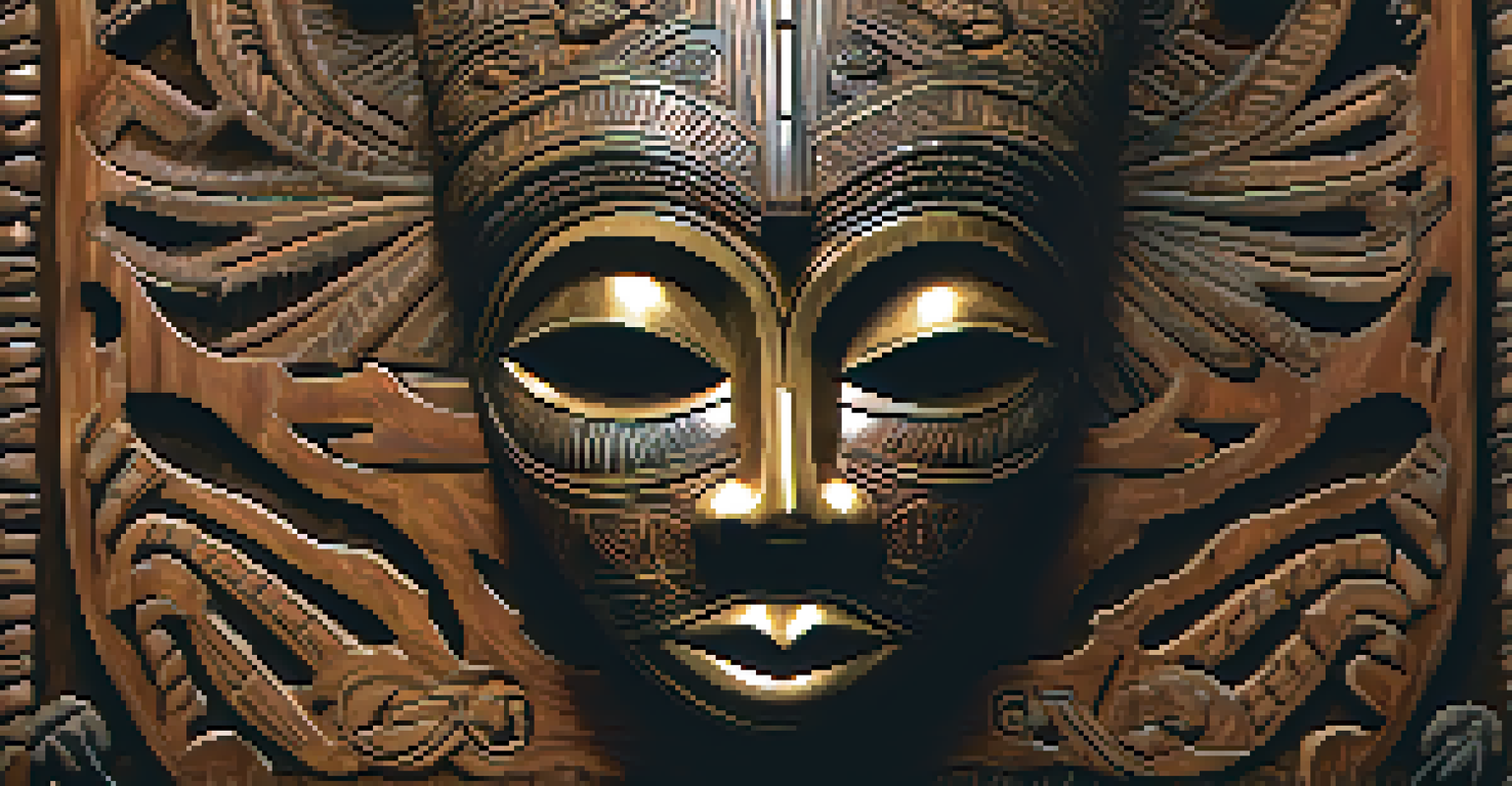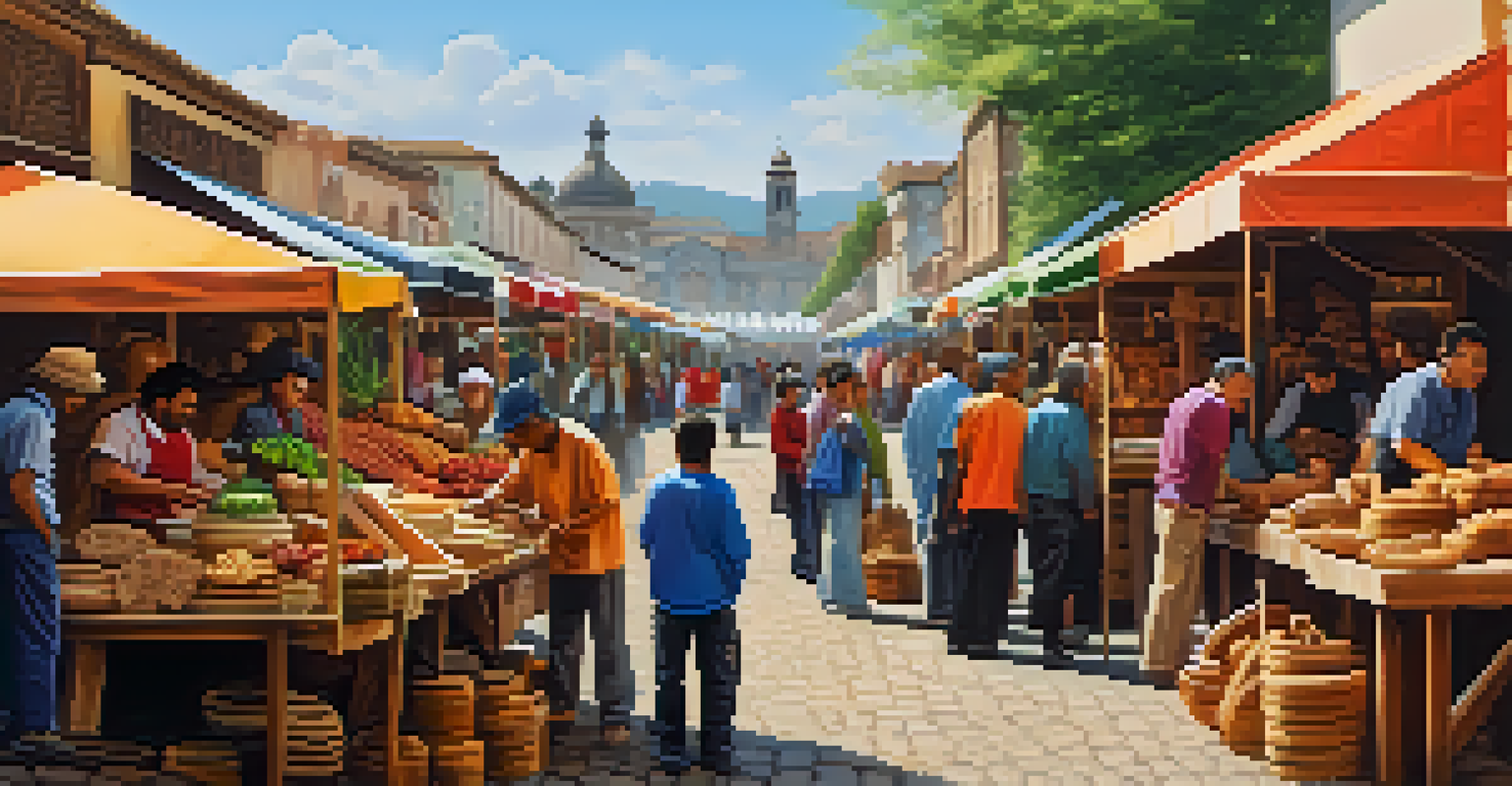The Symbolism of Carving in African Cultural Heritage

The Role of Carving in African Identity and Community
Carving holds a special place in African identity, serving as a reflection of community values and heritage. It connects individuals to their ancestors and cultural narratives, showcasing the stories that define them. For many African tribes, these carvings are not just art; they are vital symbols of belonging and identity.
Art is the most beautiful of all lies.
Through intricate designs and motifs, carvings often depict significant events, spiritual beliefs, and societal roles. This makes each piece a unique representation of a community's history and ethos. By understanding these symbols, one gains insight into the social fabric that binds these communities together.
Moreover, the act of carving itself fosters a sense of belonging, as artisans pass down techniques and stories through generations. This transmission of knowledge not only preserves cultural identity but also strengthens community ties, ensuring that the legacy of carving continues to thrive.
Spiritual Significance of Carvings in African Cultures
In many African cultures, carvings are imbued with spiritual significance, often acting as conduits between the physical and spiritual worlds. These artifacts are used in rituals and ceremonies, believed to invite blessings or protection from ancestors and deities. For instance, masks carved for specific ceremonies can embody the spirits of ancestors, guiding the community.

The symbolism of these carvings extends to their materials as well, which are often chosen for their spiritual properties. Wood, stone, and bone each carry unique meanings and associations, adding layers of significance to the carvings. This deliberate choice reflects a deep understanding of nature and spirituality within the community.
Carvings Reflect African Identity
African carvings serve as vital symbols of community values and heritage, connecting individuals to their ancestors and cultural narratives.
Through these spiritual practices, carvings become more than mere objects; they transform into living symbols of faith and cultural continuity. They serve as reminders of the unseen forces that influence daily life, reinforcing the importance of traditions and beliefs that have been cherished over centuries.
Carvings as Historical Narratives in African Societies
Carvings often serve as historical narratives, encapsulating the essence of a community’s past. Each piece tells a story, whether it’s a depiction of significant events, ancestral lineage, or traditional practices. This storytelling aspect allows future generations to connect with their history in a tangible way.
The past is never dead. It's not even past.
For example, the intricate carvings seen in places like the Kingdom of Benin depict royal lineage and significant battles, preserving the memory of historical figures. These carvings not only honor the past but also educate the younger generation about their heritage and the lessons learned from it.
By engaging with these historical narratives, individuals gain a sense of pride and responsibility to uphold their culture. This connection to the past fosters a deeper understanding of the present, encouraging communities to celebrate their achievements while acknowledging their struggles.
The Artistic Expression Found in African Carvings
The artistry involved in African carvings is a testament to the creativity and skill of the artisans. Each carving is a unique expression of the artist's vision, often blending traditional techniques with personal interpretation. This fusion of styles results in pieces that are not only culturally significant but also visually captivating.
For example, the bold lines and intricate patterns found in the carvings of the Dogon people reflect their deep connection to the cosmos and nature. Such artistic choices showcase the diversity of thoughts and beliefs across different cultures, making each carving a work of art in its own right.
Spiritual and Historical Significance
These carvings not only embody spiritual beliefs and rituals but also act as historical narratives, preserving the community's past for future generations.
Moreover, the appreciation of these artworks extends beyond their aesthetic value. Collectors and art enthusiasts recognize the cultural narratives and emotional resonance embedded within each piece, elevating African carvings to a status that transcends mere decoration.
The Impact of Colonialism on African Carving Traditions
Colonialism had a profound impact on African carving traditions, often leading to a shift in styles and purposes. Many artisans were forced to adapt their work to meet the demands of foreign markets, which sometimes diluted the original cultural meaning. This resulted in a loss of authenticity in some cases, as traditional methods were overshadowed by commercial interests.
Despite these challenges, many communities have worked tirelessly to preserve their carving traditions. By reviving ancient techniques and emphasizing the importance of cultural heritage, artisans are reclaiming their narratives and pushing back against colonial influences. This resurgence reflects a resilient spirit, showcasing the enduring power of cultural identity.
Today, there is a growing appreciation for authentic African carvings, both locally and globally. This renewed interest not only supports artisans but also encourages a deeper understanding of the rich cultural heritage behind each piece.
Contemporary Carving Practices and Innovations
In the modern era, African carving practices are seeing exciting innovations while maintaining traditional roots. Artisans are experimenting with new materials and techniques, creating pieces that resonate with contemporary audiences. This blend of old and new allows them to express their cultural identity in fresh ways.
For instance, some artists are incorporating recycled materials into their work, highlighting environmental consciousness while honoring traditional crafting methods. This innovative approach not only breathes new life into the art form but also reflects the evolving values of society.
Innovation in Contemporary Carving
Modern artisans are blending traditional techniques with contemporary materials and themes, ensuring the evolution and relevance of African carving practices.
Furthermore, contemporary exhibitions and art fairs are showcasing these innovations, providing a platform for African artisans to share their work with the world. This visibility helps to elevate the status of African carving as a dynamic and relevant art form, ensuring its continued evolution and appreciation.
The Future of Carving in African Cultural Heritage
The future of carving in African cultural heritage looks promising, as younger generations embrace and adapt these traditions. Increasing interest in cultural heritage among youth is driving a revival of traditional carving practices. By learning from their elders, they are not only preserving techniques but also infusing them with modern influences.
This generational exchange is vital for the sustainability of carving traditions. Workshops and community programs are being established to teach carving skills, ensuring that knowledge is passed down and adapted over time. Such initiatives foster a sense of pride and ownership among the youth, encouraging them to engage with their cultural heritage.

As the world becomes more interconnected, African carvings are gaining recognition on global platforms. This exposure presents opportunities for artisans to showcase their skills and stories, fostering appreciation and respect for the cultural significance of their work. With continued support and innovation, the future of carving in African heritage holds great potential.